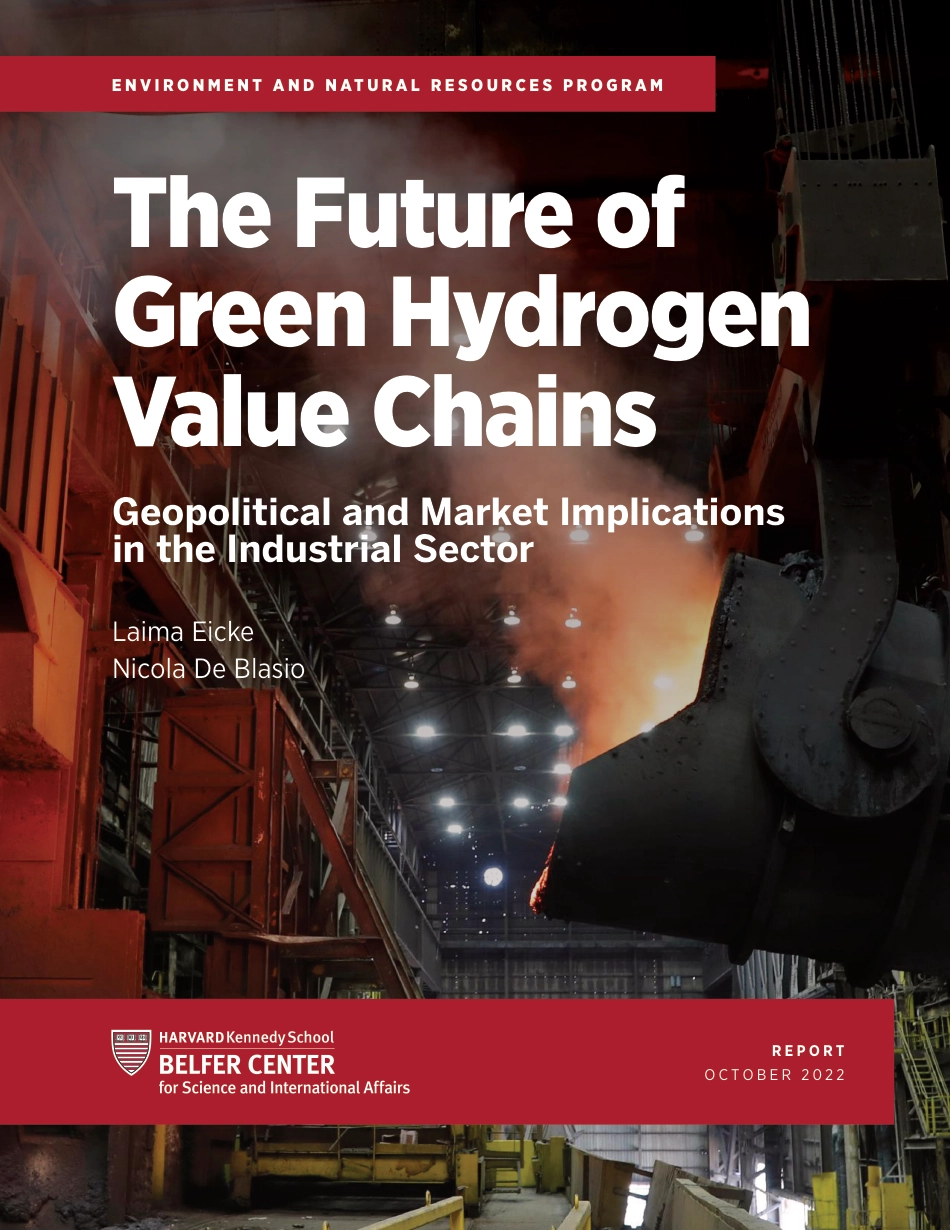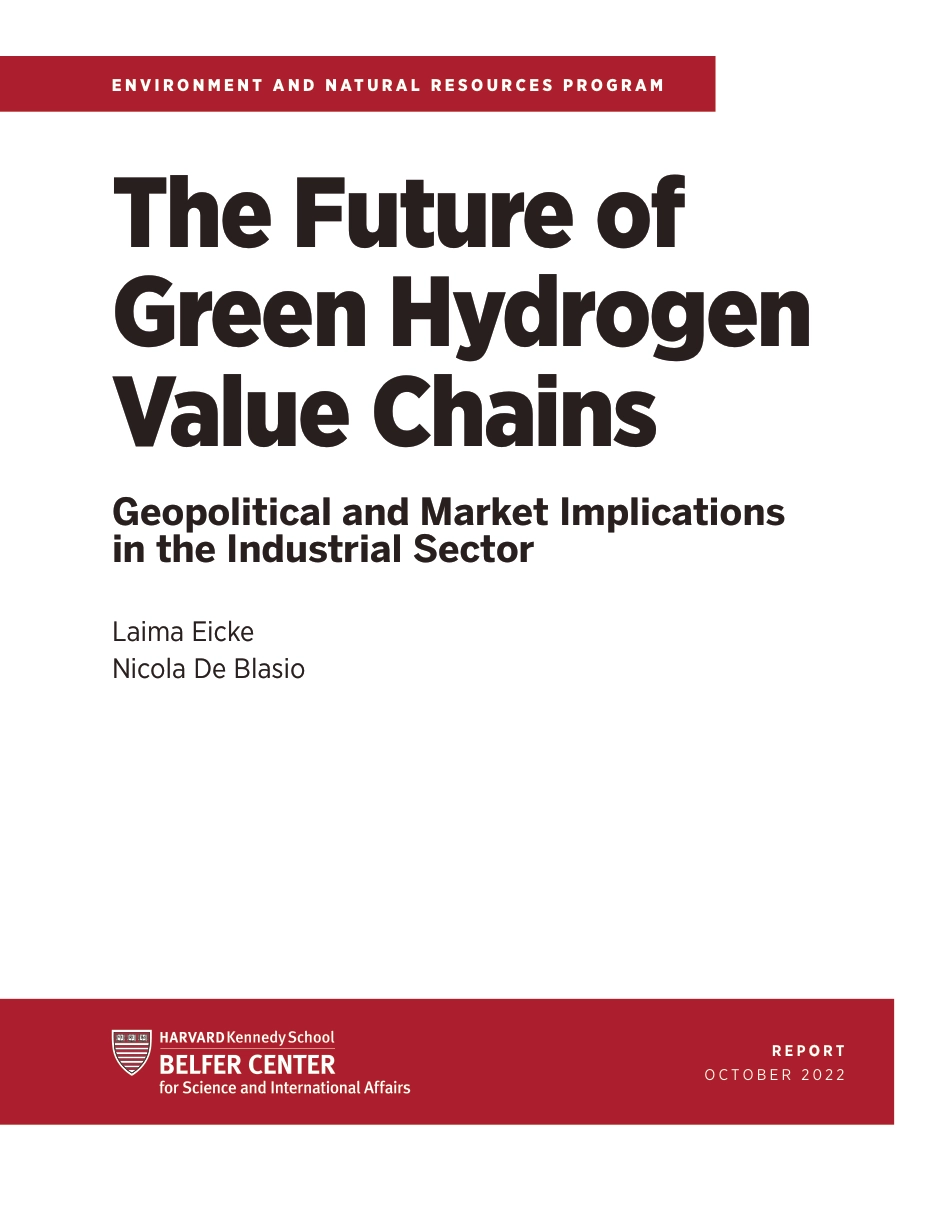R E P O R T O C T O B E R 2 0 2 2E N V I R O N M E N T A N D N AT U R A L R E S O U R C E S P R O G R A MThe Future of Green Hydrogen Value ChainsGeopolitical and Market Implications in the Industrial SectorLaima Eicke Nicola De BlasioEnvironment and Natural Resources Program Belfer Center for Science and International Affairs Harvard Kennedy School 79 JFK Street Cambridge, MA 02138www.belfercenter.org/ENRPStatements and views expressed in this report are solely those of the author(s) and do not imply endorsement by Harvard University, Harvard Kennedy School, or the Belfer Center for Science and International Affairs.The designations employed and the presentation of the material on the maps in this report do not imply the expression of any opinion whatsoever concerning the legal status of any country, territory, city or area or of its authorities, or concerning the delimitation of its frontiers or boundaries.Copyright 2022, President and Fellows of Harvard CollegeR E P O R T O C T O B E R 2 0 2 2E N V I R O N M E N T A N D N AT U R A L R E S O U R C E S P R O G R A MThe Future of Green Hydrogen Value ChainsGeopolitical and Market Implications in the Industrial SectorLaima Eicke Nicola De BlasioiiAbout the ProgramThe Environment and Natural Resources Program’s mandate is to conduct policy-relevant research at the regional, national, international, and global level, and through its outreach initiatives to make its products available to decision-makers, scholars, and interested citizens. Over the past 30 years environmental policy has changed dramatically. Today it is an integral part of energy policy, economic development, and security. Security means not only pr...



